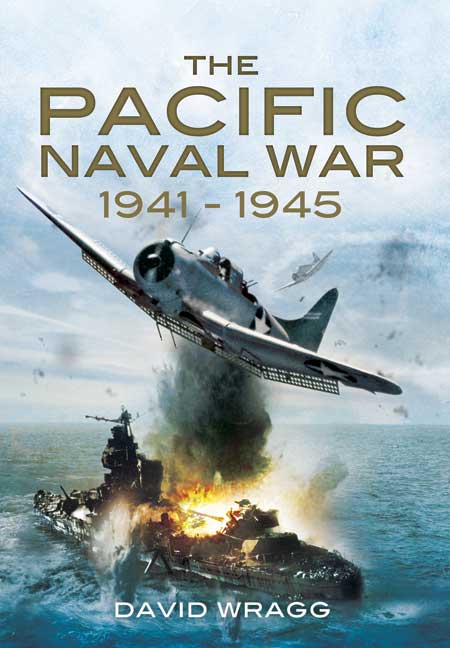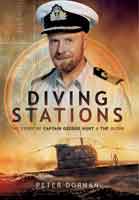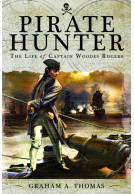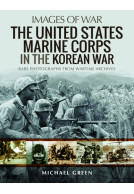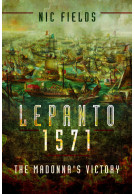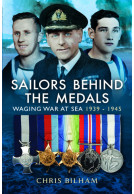The Pacific Naval War 1941-1945 (eBook)
File Size: 3.5 MB (.epub)
ISBN: 9781844689712
Published: 18th May 2011
The Pacific Naval War 1941-1945 is an account of the war between the Allies and the Japanese. This was primarily a naval war as sea power allowed the Japanese to mount their attack on Pearl Harbour and then advance westwards and southwards, and it was sea power that enabled the Allies to strike back and even take the war to Japan itself. The tide turned very quickly, with the overwhelming US victory at Midway in June 1942 ending any Japanese hope of domination, and eventually saw the greatest naval battle in history at Leyte Gulf as American forces retook the Philippines.
The book begins by setting the scene in the Far East and the decisions that led Japan into war, and also by looking at the situation faced by the Royal Navy elsewhere, with its initial heavy losses of major ships, and especially aircraft carriers. Yet, within a couple of years, the Royal Navy was able to send the strongest and most balanced fleet in its history to the Far East and played a major role in attacking Japanese oil production and in preventing reinforcements being flown from Japan to Iwo Jima and Okinawa. The conflict also saw the Royal Australian Navy develop from a small force designed to support the Royal Navy in the southern hemisphere into a viable naval force in its own right and ready to become a balanced fleet in the immediate post-war years. The progress of the war is supported by eye-witness accounts from those involved in the fighting at sea.
In this book the author makes the important point that, while American naval forces played the dominant role, it is historically inaccurate to regard it as exclusively their theatre. He shows how the Royal Navy and the Royal Australian Navy made a significant contribution to ultimate victory.
NavyBooks.com
In this book the author makes the important point that, while American naval forces played the dominant role, it is historically inaccurate to regard it as exclusively their theatre.
Warship World
At last, a naval history of the Pacific War that is nor entirely american or Japanese centric.
Ausmarine
The authors, noted and very experienced naval historian has produced an all-encompassing and well-balanced overview of the naval action in the Pacific during World War Two.
A good overall record of an enormously important part of the world's naval history.
This latest work by David Wragg is essentially an overview of Japan’s six month’s Blitzkreig in the Western Pacific and the allied campaign for the next three years to roll back their conquests. In British eyes this has long been regarded as the second string of WWII but whilst the Governments of America and the Anzac (Australia and New Zealand) countries accepted the “Germany first” approach to dealing with the Axis Powers, in the eyes of the people of those countries, Japan was definitely seen as the main enemy.
Review by John Francis MA (Maritime History) Greenwich Maritime Inst., England.
The book starts by setting the scene in the 1920s and 30s before dealing with the attacks on USA in Hawaii and the Philippines, the British Empire in Malaysia and the Indian Ocean and on the Dutch East Indies. It goes on to cover the fightback from the Doolittle Raid, the battles of the Coral Sea and Midway, through the campaigns in the Eastern Solomons, the Gilberts, Marshalls, Marianas, Philippines and Okinawa to the attacks on the Japanese homeland and the final surrender. This is all familiar territory to students of WWII, let alone the Pacific War specialists. But Wragg is at pains to remind us about the other allies’ involvement in the attack on Darwin and the Indian Ocean, both of which he dismisses as unnecessary sideshows by the Japanese. He also points out the RN’s involvement in the fightback with the British carrier raids on Sumatra’s oil refineries and their eventual involvement off Okinawa and Iwo Jima in support of the USN’s final stage attacks before the expected invasion of the Japanese homeland. There are separate chapters on the kamikaze attacks (which really form the later part of the main story) and the USN submarine war against Japan (which can be treated separately without loss of context). The text is supported by recollections of some of the participants (of which more later); by a bibliography which gives the sources of those participants’ recollections but unfortunately not much else; by a useful chronology; by 39 photographs all of which are taken from USN Naval Records Centre, but nevertheless there are some unusual action shots as well as the usual ones of the key players. There are no end notes or references apart from the index and bibliography.
The main problem with trying to tell this story in only 185 pages is that it can only be a summarised overview and with so much attention given to the British element (which does not figure in the title) and to the personal recollections of the lesser combatants, some of which are no doubt interesting but do not necessarily add to the story it has clearly been difficult to cover all of the action. Whilst there is enough to cover the topic, it is not sufficiently different from other works to earn its place in what has become a very competitive field for naval historians. Coupled with this is the fact that the book makes no references to the various recently published “reconsiderations” that have appeared, such as Parshall and Tully’s Shattered Sword and George Victor’s The Pearl Harbor Myth – Rethinking the Unthinkable which means that it relies on older accounts, many of which have been called into question. Whilst some of these reconsiderations are as recent as Wragg’s book, the two examples above date from 2005 and 2007 and deserve mention because of the difference light they have placed on some of the events. Also, one of the participant’s whose testimony has been relied on is that of Mitsuo Fuchida, leader of the Pearl Harbor air attack who has now been totally discredited as a reliable source particularly for his recollections of the Pearl Harbor attack and the Battle of Midway. One other criticism is that the book appears to have been written in a series of distinct sections and these have then been assembled into the complete work at a later date. This means that some events are covered twice in separate chapters, yet in other places there are significant omissions. To counter-balance this, there are some very perceptive comments about some of the events, particularly the Doolittle Raid and the Battle of the Coral Sea and also on the growth of the Royal Australian Navy.
The publishers have reminded us that naval aviation is a particular area of interest for the author and whilst it is certainly true that he has a list of related works, this overview, told in his own style using personal recollections, is likely to appeal more to British readers than Americans, many of whom still see the Pacific war as theirs alone. If British readers wish to learn more detail about their part in the Pacific war, another work by David Hobbs for the same publisher specifically deals with the British Pacific Fleet in 383 pages, a much more generous coverage. Therefore Wragg’s work faces some very tough competition in a currently topical market.
Whilst the author has woven the various events together to produce a well summarised story, what it lacks is any attempt to analyse the reasons for the initial rout of the allies, why the Japanese thought they would succeed and how the allies organised their fightback. There is a final “what if” chapter but this is better seen as a summary and conclusion than a consideration of what might have been.
Overall, it is a rather tall order to tell this story in such a brief volume and this points out one of the main problems with this book, that it is clearly not written for students or naval historians who would like to see a lot more detail.
This book must be seen for what it is, an interesting summary but not the whole of the story and definitely the definitive account of The Pacific Naval War.
The book is very interesting reading, and although I have studied this topic all my life, I must admit that I both learned a lot from it and gained some new historical perspectives. A 26-item bibliography is provided at the end, along with an index. Its greatest value is coverage of the British role in the campaigns, as much has already been written about American participation.
web.ipmsusa3.org







